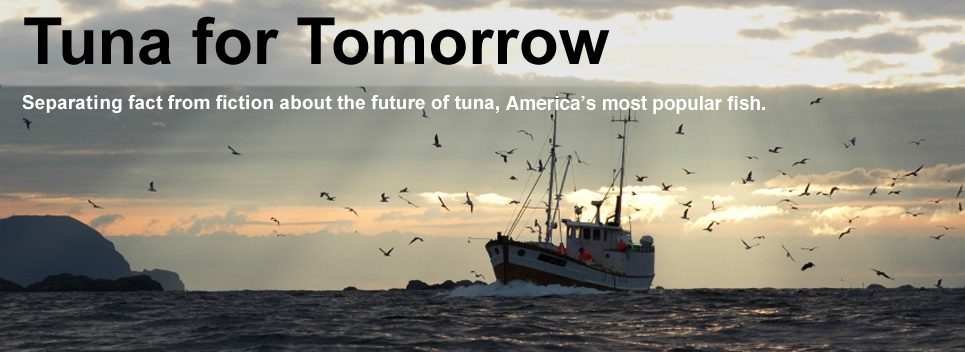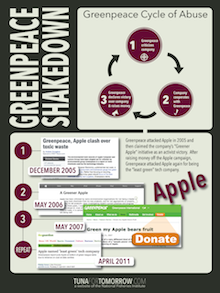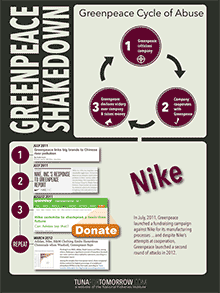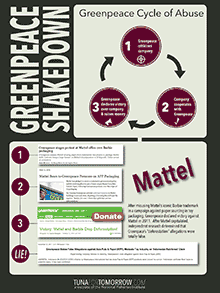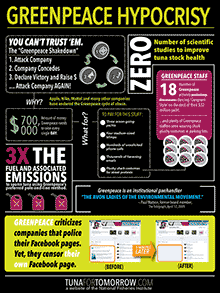Greenpeace is touting the latest in its long line of opaque, subjective, and hopelessly flawed “reports” on retail seafood. This year’s model may have lost the juvenile aesthetic and top hat donning cartoon fish of previous iterations, but the substance—or lack thereof—remains much the same. It is still first and foremost a fundraising tool and evidence of that can be found in its erratic methodology and narrative.
Where Greenpeace’s “CATO report” does break new ground it is highly troubling. No longer content to hide its dangerous ulterior agenda behind a thin veneer of inference and insinuation, Greenpeace is now openly calling for Americans to “eat less seafood.” This not only destroys whatever shreds of credibility Greenpeace had left, but puts its fringe activists at odds with just about every medical and nutritional expert in world including the  Food and Drug Administration.
It’s one thing to advocate for misguided shopping practices, but when it actively abets an ongoing public health crisis that is impairing fetal cognitive development and contributing to tens of thousands of preventable deaths each year, Greenpeace is crossing a dangerous line.
The rest of the “report” consists of the same kind of unsupported and ideologically motivated reasoning we’ve come to expect from Greenpeace. The document purports to rank seafood retailers according to objective empirical standards (right down to the decimal point), but provides zero explanation on how scores are actually calculated. This is especially ironic considering “transparency” is one of the criteria on which retailers are judged, a value Greenpeace appears to support only selectively.
Where Greenpeace does give readers breadcrumbs about its methodology, it openly contradicts itself. Consider for instance that the “report” essentially admits that Greenpeace’s seafood “Red List” is useless. The list is “not comprehensive” while at the same time fish appearing on it can be sourced in a “responsible” manner, by the group’s own admission. In other words, if a fish is not on the list it can still be bad, and if it is on the list it can still be good.
Similarly, in virtually the same breath, the “report” goes from urging retailers to source from Fishery Improvement Projects (FIPs) to saying that sourcing from FIPs just isn’t good enough. As anyone who has ever tried to engage Greenpeace on seafood sustainability knows, nothing is ever good enough. That’s why they have refused to take part in the invaluable sustainability work of the scientists, fishery experts, and environmental stakeholders at the International Seafood Sustainability Foundation.
In this year’s report Greenpeace editorializes on labor practices without noting that our members do not and will not tolerate labor abuses or unfair practice, either inside their companies and or among their suppliers and partners.
Retailers are starting to realize the futility of dealing with the strong-arm tactics and capricious standards of Greenpeace, and have wisely stopped participating. There is simply no upside to negotiating with activists who are happy to rake companies over the coals whether they cooperate or not.
Worst of all, even as Greenpeace unscientifically and arbitrarily ranks retailers for their practices, it refuses to conduct environmental or economic impact studies of its own preferred fishery policies—perhaps because they know the methods they favor would hurt both the environment and ordinary American consumers.
The latest “CATO report” proves that Greenpeace has yet to learn from years of embarrassing missteps, and that they’ve moved onto even more dangerous ground in encouraging Americans to eat less seafood at a time when low seafood consumption is already putting Americans at risk. Retailers and the press have begun to take notice. Greenpeace donors will likely be next.


